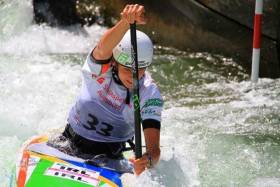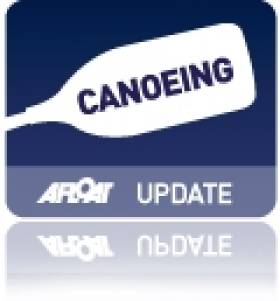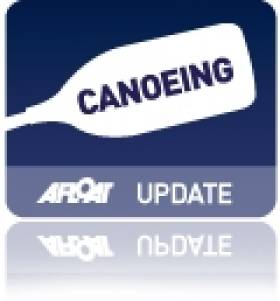Displaying items by tag: Heurteau
Heurteau Misses Chance of Olympic Qualification
#Canoeing: Ciarán Heurteau finished 16th in his second run of the K1 at the European Championships in Slovakia and missed out on a place in the semi-final, and the possibility of claiming a place at the Olympics. Heurteau had a poor first run, missing gate seven and incurring a 50-second penalty. His second-run time of 100.52 seconds was much better, but he would have had to finish in the top 10 to progress. Elliott Davidson placed 58th and 20th in his two runs.
Liam Jegou Impresses at Irish Open in Lucan
#Canoeing: Liam Jegou (20) took until his second run to master a tough course at the canoe slaolm Irish Open at Lucan today. The C1 competitor lowered the time of his first run by over 10 seconds, setting a winning mark of 90.81 seconds. Mike Kurt, the Swiss international who set the pace in the K1, also struggled on his first run on a course where two upstream gates below the sluice tested all the competitors. Kurt nailed it on the second run, with the best penalty-free time of the day – 89.08 seconds. Ciarán Heurteau, recovering from injury and a break from the sport, was the best Ireland senior competitor, being credited with 95.01 seconds, which included four seconds in penalties. Sam Curtis was bang in form at under-23 level: his first run was a winning one of 90.56 seconds. He bettered the time in the second run (88.64) but was adjudged to have touched one gate and missed another, so incurring 52 points in penalties.
Hannah Craig was the top woman competitor in the senior K1, while Caoimhe O’Ferrall set an excellent time of 121.92 in the C1, though she is just 18.
Canoe Slalom Irish Open, Lucan, Sunday (Selected Results)
Men
K1 – Senior: 1 M Kurt 89.08, 2 C Heurteau 95.01, 3 P Hynes 110.55. Under-23: S Curtis 90.56. Under-18: L Palmer 105.42. Masters: A Boland 114.79. Vets: G Collins 135.86.
C1 – Under-23: 1 L Jegou 90.81, 2 R Hendrick 99.25, 3 J Cochrane 101.34. Under-18: E Moorhouse 124.24. Under-16: F McNally 121.7
Women
K1 - Senior: H Craig 109.13. Under-23: G Ridge 108.5. Under-18: M Hamer Evans 109.06. Under-16: K Davidson 128.4.
C1 - Under-23: C O’Ferrall 121.92.
Canoeist Heurteau Finishes Just Short of World Cup Final
#CanoeSlalomTacen: Ireland’s Ciarán Heurteau came within 1.24 seconds of qualifying for the final of the Canoe Slalom World Cup in Tacen in Slovenia this morning. In an exciting semi-final, the 26-year-old had a clear run in 107.22 seconds. This slotted him into eighth with eight competitors to go and he was eventually pushed into 15th. The 10th-placed qualifier clocked 105.98.
Eoin Rheinsich came down the course in a raw time of 108.19, but a touch on gate 13 cost him a two-second penalty. He finished 25th.
Canoe Slalom World Cup, Tacen, Slovenia – Day Two (Irish interest)
Men
K1 – Semi-Finals (Top 10 Qualify for Final): 15 C Heurteau 107.22, 25 E Rheinisch 110.19 (incl 2 sec pen)
Canoeists Heurteau and Rheinisch Both Make Semi-Finals
#CanoeSlalomTacen: Eoin Rheinisch and Ciarán Heurteau both qualified for the semi-finals of the men's K1 at the canoe slalom World Cup at Tacen in Slovenia today. Heurteau clocked an excellent time of 100.02 seconds with no penalties in his second run this afternoon. The French-born Irishman was under pressure as he had not guaranteed qualification with his first run.
Rheinisch did not compete in the second run as his first-run time of 102.21 had proved sufficient to qualify him to tomorrow’s semi-finals.
Hannah Craig did not qualify in the women's K1.
Canoe Slalom World Cup, Tacen, Slovenia – Day One (Irish interest)
Men
K1 – Heats (Top 40 Qualify): 9 C Heurteau 100.02 seconds (2nd run); 25 E Rheinisch 102.21 (1st run); 67 P Hynes 118.28 (2nd run; incl. 6 sec pen)
Women
K1 - Heats (Top 30 Qualify); 37 H Craig 170.88 (2nd run; incl 52 sec pen)
Ireland Canoeist Rheinisch Starts Well in Tacen World Cup
#CanoeSlalomTacen: Eoin Rheinisch started well at the Canoe Slalom World Cup in Tacen this morning. The Ireland paddler had a clear first run in a time of 102.21, placing him fourth in the K1 competition at this very early stage. Ciarán Heurteau was judged to have had a touch at gate four, adding a two-second penatly to his time of 104.77, and leaving him down the rankings. Patrick Hynes had a run of 123.17, including 10 seconds in penalties. The second run is due later today.
Heurteau and Rheinisch Miss Out in One-Shot Heat
# EURO CANOE SLALOM: Ireland’s two competitors in the men’s K1 (racing kayak) at the European Canoe Slalom Championships in Krakow in Poland today came up short of making the final. The programme had to be radically altered because of the recent flooding and only the first 15 of 57 in a single run made it to the final. Ciaran Heurteau was ajudged to have missed the 15th gate and the resulting 50-second penalty ruled him out. However, Eoin Rheinisch was originally in the hunt, initially placing 8th after clocking 91.54 seconds including a two-second penalty for hitting gate 19. But that penalty was upped to 50 seconds and he finished 46th, with Heurteau 47th. Rheinisch’s original run would not have made it in any case as the competitors coming after him pushed him down the field.
Canoe Slalom European Championships, Krakow, Poland, Day One (Irish interest)
Men
K1 Heat One (First 15 to Final): 1 Czech Republic (V Hradilek) 82.96; 46 E Rheinisch 139.54 (89.54 plus 50 sec penalty); 47 C Heurteau 140.20 (86.20 plus 54 sec penalties).
Heurteau Keeps Irish Hopes Alive at Canoe Slalom World Championships
The top 15 nations on Sunday are guaranteed a place at the London Olympics.
Canoe Slalom World Championships, Bratislava, Slovakia (Irish interest)Men
K1 Heats (top 40 to Semi-Final): 1 Germany (A Grimm) 87.94; 38 C Heurteau 92.60 (2nd run), 54 E Rheinisch 94.65 (1st run), 80 P Hynes 105.45 (2nd run).
Women
K1 – Heats (top 30 to Semi-Final): 1 Spain (M Chourraut) 96.14 seconds; 61 A Conlon 120.39 (2nd run); 66 H Craig 158.15 (2nd run).



































































